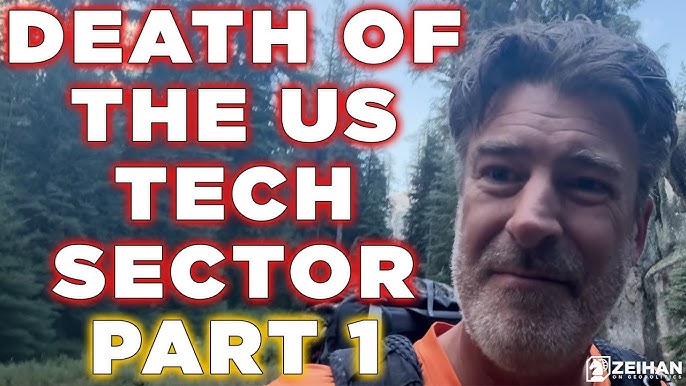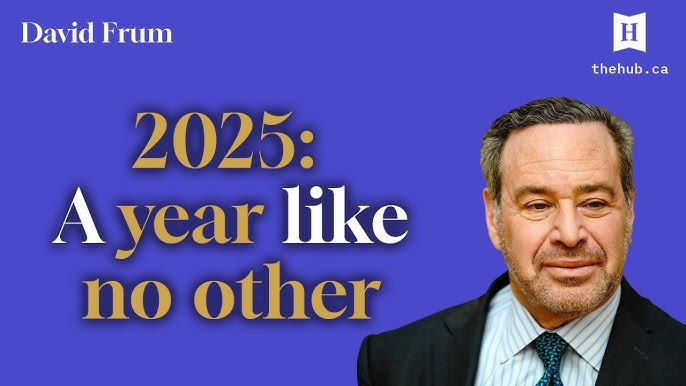
Peter Goodman: The Messy Reality of ‘Made in America’
The construction of a giant factory complex in Arizona was supposed to embody the Trump administration’s ability to bring manufacturing back to the United States.…
Thought Leader: Peter Goodman

The war in Ukraine long ago ceased to be front-page news in the US. Months before October 7, when Hamas and Palestinian Islamic Jihad launched their bloody rampage into Israel, Ukraine had slipped down the media’s priority list, well below the private life of Taylor Swift or the boardroom battles of Open AI. But October 7 caused a near-total eclipse. Previously, the war in Ukraine amounted to about 8 per cent of CNN’s television coverage. After October 7, the share plunged below 1 per cent. A Ukrainian friend told me that the rapid departure of CNN’s Kyiv bureau for Israel painfully symbolised the shift of American attention.
Before the Christmas break, responding to their voters’ clear preferences, Republicans in Congress declined to pass a $US60 billion ($88 billion) aid package that would have kept American resources flowing to Ukraine because Democrats would not accept their demands for tighter security on the US-Mexico border.
This was despite the support for additional aid to Ukraine from every congressional leader – Senate Majority Leader Chuck Schumer, Senate Minority Leader Mitch McConnell, House Speaker Mike Johnson and House Minority Leader Hakeem Jeffries.
It has long been a talking point in Ukraine that, if Donald Trump is elected US president in November, their country will be in trouble. It turns out their country is already in trouble, 11 months before the US election.
Ukrainian forces are defending a 2000-kilometre frontline, with a primary contact area of about 400 kilometres. President Volodymyr Zelensky’s December 1 order to fortify the front line confirmed that Ukraine must now switch to the defensive, which commander-in-chief General Valeriy Zaluzhnyi has sought since his Economist article in November. Ukraine’s army chiefs have also reportedly asked Zelensky to mobilise 450,000-500,000 soldiers this year.
Digging in and defending is the only way Ukraine can survive for the next few months, with US support stalled much sooner than expected. American loss of interest has been followed almost immediately by Ukrainian shortages of material. Kyiv barely has sufficient long-range strike weaponry, artillery ammunition and air defence systems to cope with the brutal Russian air offensive under way.
The Anglo-French Storm Shadow cruise missiles and US ATACMS have been used up, while Germany has yet to provide Taurus missiles to bridge the gap. A single Patriot battery from Germany is not a game-changer. The issue is interceptors, which Ukraine will soon run out of without additional Western deliveries.
True, Kyiv can still use drones for long-range attack missions, as it has done against targets in Crimea. True, Ukrainian attacks on Russia’s Black Sea Fleet have limited Russia’s bombardment options. But Ukraine’s inability to maintain pressure on enemy logistics will allow Russia to build up its military strength.
Western sanctions have imposed costs on Russia’s economy. Yet, they have failed to prevent Russia’s war machine growing more powerful. Thanks to a concerted effort to increase arms production, with factories working multiple shifts and the labour market at full stretch, Russia enjoys a five-to-one artillery advantage. Granted, the insistence of Russian commanders on frontal assaults (most recently, at Avdiyivka) reduces the impact of this ratio, but it still bodes ill for Ukraine.
Even if US aid remains in limbo, a Russian breakthrough along the front line in the next few months remains unlikely. Nevertheless, Russia will be able to grind down Ukrainian combat capability. By the second half of 2024, the situation may be dangerously precarious.
Atypical Republican argument in focus groups is that Europeans, not Americans, should do the lion’s share of supporting Ukraine because it is their neighbour. Fox News has done a poor job of explaining to its viewers that this is already the case. The latest Ukraine Support Tracker, published by the Kiel Institute for the World Economy, shows that the European Union (institutions plus member states) has made nearly double the total US commitments to Ukraine since the Russian invasion began (€133.5 billion compared with €71.4 billion).
According to the International Monetary Fund, Ukraine faces a financing gap of $US41.8 billion this year. Having mostly met its program targets, Ukraine can expect $US5.4 billion in IMF funding. The $US8.5 billion the US has promised now depends on congressional bargaining in an election year. That leaves the EU to provide at least $US20 billion.
The catch is that nearly half of European commitments to Ukraine are long-term, not short-term. In December, EU leaders approved the opening of accession negotiations with Ukraine (as well as Moldova). Hungary, which had threatened to veto the decision, abstained from the vote. This was a historic step. Two years ago, most EU members – particularly France and Germany – rejected the idea. Yet this step is also more symbolic than practical. The earliest that Ukraine could achieve EU membership is 2030. Kyiv is still far from fulfilling EU standards on corruption. In any case, Ukraine could join only after the war was over. That does nothing to help win the war.
On the same day the EU voted to open accession negotiations, Hungarian Prime Minister Viktor Orban vetoed a €50 billion EU fund to support Ukraine over the next four years. German Chancellor Olaf Scholz and French President Emmanuel Macron are drawing up plans for a Ukraine fund outside the EU structures to circumvent Hungary’s veto at the extraordinary meeting of EU leaders to be held in January. Yet (as I pointed out in September) European voters are also showing signs of “Ukraine fatigue”. Neither Scholz nor Macron looks strong enough at home to check this tendency.
As I discovered in Italy’s Valle d’Aosta recently, at a conference held by Le Grand Continent, a Paris-based think tank led by Gilles Gressani, EU leaders recognise that Donald Trump could win the US presidential election in November, with dire implications for the transatlantic alliance generally and Ukraine specifically. But they seem to have no clue what to do about this.
Some participants suggested that a “Trump shock” might help create a modern European defence industry. Governments would be able to force defence companies to merge and give Europe true “strategic autonomy”, long a popular phrase in Paris. But a pan-European defence industry would take at least a decade to create. In the meantime, who would be arming Ukraine?
A French participant acknowledged that Paris and Berlin could not fully compensate for a termination of US aid to Ukraine. EU leaders should therefore persuade Kyiv to seek a diplomatic deal with Moscow. In his view, the West had already missed an opportunity to do this when Ukraine still had the upper hand. But why would President Putin be more interested in negotiating this year, after his forces have withstood Ukraine’s over-hyped counter-offensive, than he was when his invasion was in disarray?
You begin to see why more people are seriously considering the idea of seizing the frozen assets of Russia’s central bank for Ukraine’s use, which was proposed last summer by my Hoover Institution colleague Philip Zelikow, along with Larry Summers and Bob Zoellick.
As things stand, the Biden administration is holding off, to ensure that confiscated Russian assets do not become a substitute for additional congressional funding. Poland and other eastern EU members love the idea. But Germany and France remain wary, arguing that such a move would undermine the euro as a reserve currency and the West’s claim to be upholding the “rules-based international order” – a squeamish argument that was largely ignored during the world wars, when even the private assets of enemy-country citizens were treated as fair game.
Future historians will marvel at these arcane debates. It will seem obvious by 2033, if not sooner, that the pax americana faced a well co-ordinated challenge from China, Russia, Iran and North Korea in the early 2020s. The first move was the invasion of Ukraine. The second was the war of Iran’s proxies against Israel. The third will most likely be a Chinese challenge to American primacy in the Indo-Pacific, perhaps – if Xi Jinping is bold – a blockade of Taiwan.
The United States and its allies did too little to deter all these challenges. However, once they had begun, the Biden administration rightly acted to defend the democracies that were under attack. They sent resources worth $US75 billion to help Ukraine fight for its independence. They sent two aircraft carrier strike groups to signal their support for Israel and to discourage Iran and its proxies from further aggression. And they have stepped up the arming of Taiwan.
The lesson of history is that when such commitments are made, it is extremely hazardous not to sustain them. If, over 2024, Ukraine’s position becomes so vulnerable that its forces must withdraw from some contested territory, three immediate consequences will follow.
First, more refugees will flow from Ukraine to Europe. There are 4.5 million Ukrainian refugees, most of them in EU countries and Britain. Even though many have found jobs, each refugee costs the host countries on average about €1075 a month. If another 4.5 million more Ukrainians flee as Russia advances, it would cost another €58 billion.
Second, private investors will be even less likely to risk their money on Ukraine. The country’s bonds are already down significantly since the failure of the summer counter-offensive.
Finally, if they are to arm themselves to deter an emboldened Russia that already shares borders with five EU members (plus Norway, which is in NATO but not the EU), European governments will have to get a lot more serious about their defence spending, with all the obvious political headaches that implies.
Between 1949 and 1989 – during the first Cold War – NATO’s European members spent up to 5.8 per cent of GDP on defence. That was the British figure. The French equivalent was 5.1 per cent. The West German was 3.6 per cent. In 2022, those shares were 2.1 per cent (UK), 1.9 per cent (France) and 1.4 per cent (Germany).
For these countries to return their defence budgets to their Cold War shares of GDP would require a colossal effort. It would mean about $US124 billion more a year for the UK, $US97 billion for France, and $US96 billion for Germany. For NATO as a whole to hit 3.5 per cent of GDP on defence spending would require $US431 billion more a year – almost twice the amount all countries have pledged to Ukraine since 2022 ($US247 billion).
The pax americana seems to be ending. The fate of Ukraine – and of Israel and Taiwan – hangs in the balance. I cannot say I am surprised. It was always likely that the overreach of the global war on terror would be requited in this way: with a resurgence of isolationism. Today, 57 per cent of Republican voters, and 51 per cent of independents, say that “US interests are better served by using our resources to improve life for ordinary Americans at home”. Just a third agree that “US interests are best served by supporting freedom and democracy around the world when they are under threat”.
I am with the minority on this question. Let’s hope we don’t get vindicated the hard way.
Peter Goodman: The Messy Reality of ‘Made in America’
The construction of a giant factory complex in Arizona was supposed to embody the Trump administration’s ability to bring manufacturing back to the United States.…
Thought Leader: Peter Goodman
Peter Zeihan: The Death of the US Tech Sector
We’re doing a two-part series on the tech sector. Today, we’ll be looking at the disruption caused by deglobalization and Trump’s policies. The gadgets and…
Thought Leader: Peter Zeihan
David Frum breaks down 2025’s defining moments
Leading author, journalist, and thinker David Frum and The Hub’s editor-at-large Sean Speer reflect on the most significant political developments of 2025. They discuss a…
Thought Leader: David Frum

